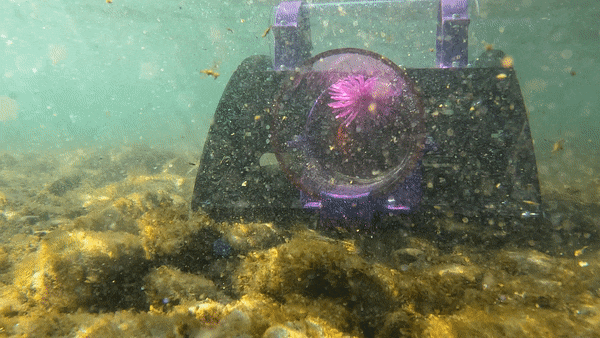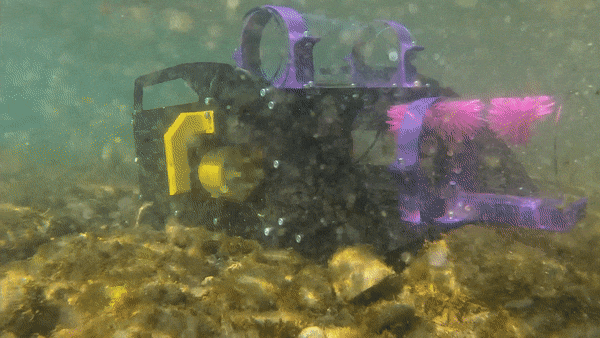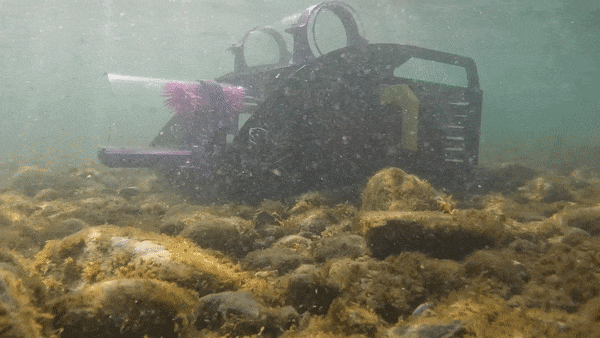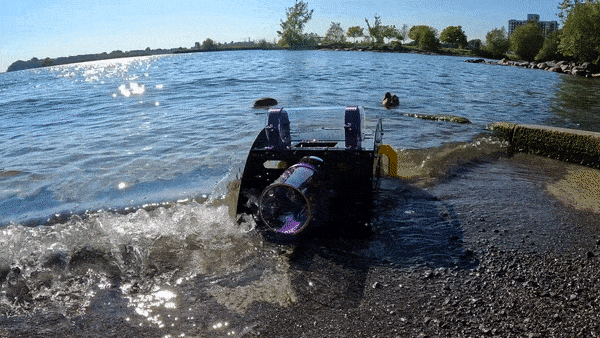The device chassis is assembled, with the thrusters installed. An outdoors test would be able to confirm the lack of buoyancy, as well as give valuable information regarding transportation logistics and deployment.
Here is an example purple sea urchin replica moving in to the suction tube. This illustrates the premise* of the device.

*Note: In reality, the purple sea urchin would be attached to the bottom - not originating from the top.
When the urchin is suctioned back towards the coupler, it will pass by an opening of the top plate where the hull can see it. This is where the count of the number of urchins caught will take place by the hull electronics.
The water had quite a bit of particulate matter suspended in it today. Here is a tour around the device:

An observation was that the device may need to have additional weights when in standalone. The current catches the side panels and could tip it over. This will become even more pronounced when the hull electronics are added, including the battery, which will raise the center of gravity even higher.

When the device is on the seabed, it would be in the standalone configuration protecting newly planted kelp seedlings. It could look similar to this:

Here are photos of the device prototype:
Can you spot the thrusters installed?
As for the surrounding nature, ducks were curious about the device:

Regarding transportation logistics, the device was placed onto a skateboard, with a towel to avoid scratches. This was then rolled down to the water.
Next time when the device has all its electronics, it will be ready for “Do a kickflip!”.
Progress continues!
 EK
EK
Discussions
Become a Hackaday.io Member
Create an account to leave a comment. Already have an account? Log In.